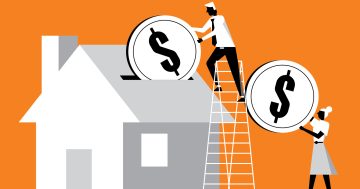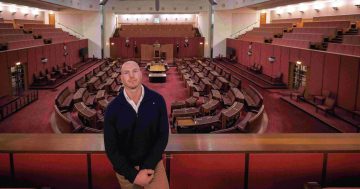Matthew Bateman* and Luke Harris* say that as more and more people are being priced out of their preferred housing market, ‘rentvesting’ is becoming a popular strategy.

Photo: Tom Rumble
Like anything you do in the investing space, knowing which strategy to apply and when to apply it are powerful wealth creation tools.
“Rentvesting” is becoming an ever more popular strategy as more and more people have been priced out of their preferred housing markets over recent years.
In essence, rentvesting is buying an investment property in an area you can afford or where the investment fundamentals are better, while renting in the area in which you want to live for lifestyle purposes.
A 2017 poll by non-bank lender State Custodians Home Loans, which surveyed over 1,000 people across Australia, found that 74 per cent think rentvesting is a good strategy for those struggling to enter the property market.
Rentvestors make up about 8 per cent of property buyers according to research prepared by Ipsos, and the strategy is particularly popular among millennials.
A Westpac study found that rentvestors are typically young males, most likely single, with a bachelor degree level of education.
They are earning relatively high incomes and they don’t feel the same way the previous generation did about owning their own home.
They often see property as an investment and a way to accumulate wealth, rather than a place to settle down to raise a family.
So, how do you determine whether rentvesting is right for you?
Here are five things to consider:
- Do you have a property plan?
Obviously, whether you choose rentvesting or any other property related strategy should come down to the question, “Does it fit my plan?”
Unfortunately, many investors fail to plan exactly how and when they are going to achieve their financial goals and make decisions based on what sounds good now without adequate consideration of the longer term.
- What size deposit do you have?
Depending on where you want to live, the size of your deposit will be a determining factor in whether you can afford to buy or have to rent.
As a general rule, multiply the size of your deposit by four to determine what you can afford to purchase.
This assumes you are using a 20 per cent deposit and a 5 per cent allowance for other upfront costs such as stamp duty, legal fees, and so on.
Can you afford to buy in the area in which you want to live?
If not, you might consider rentvesting, as it may allow you to get into the property market sooner.
- What is your maximum borrowing capacity?
Even if you have saved a big enough deposit, will your income allow you to borrow the balance of funds required to purchase in your preferred location?
Because your own home or principal place of residence (PPR) does not generally provide you with any income, you may be able to borrow less for a PPR than you can if the property is going to be rented out as an investment property.
Banks will often use 80 per cent of the rental income when calculating what sort of debt you can afford to take on.
Given the recent tightening in the lending space, working with a great investment-focused mortgage broker will help you work out what all the options are.
- Do you know where you will be in one, five and even 20 years from now?
Let’s face it, when we are young, we don’t know exactly where the future will take us or where we will ultimately want to call home.
Rentvesting may give you greater flexibility to decide where you will live in the future, as rental leases are typically shorter and easier to move away from than relocating from a PPR.
Not being tied to a mortgage may give you greater life freedom.
- How much tax do you want to pay (and when do you want to pay it)?
They say in life there is nothing as certain as death and taxes.
However, the taxation treatment of a PPR and an investment property (IP) are very different.
On the one hand, your PPR is considered a non-tax deductible form of debt.
That means you will not be able to take advantage of any of the depreciation or tax benefits that may be applied to an IP.
For example, if you are on a good income, your IP (after all of your cash, and non-cash deductions are factored in) might be negatively geared, meaning you may be able to legally reduce the amount of tax you need to pay each year.
On the other hand, if you are likely to be trading properties regularly, you might find it more cost-effective to buy a PPR, which does not attract any Capital Gains Tax (CGT).
(Or at least not until the financial year of sale if we are talking about the CGT calculated on the sale of an IP if held for greater than 12 months.)
There are usually two types of decisions that need to be made when assessing whether rentvesting will be right for you.
The first are financial decisions based on your property plan, and often involving complex mathematical calculations taking into account things like your savings and income levels, maximum borrowing capacity, and taxation benefits.
The other decisions are driven more by emotions and lifestyle ambitions, such as where you want to live.
This may include access to schools, hospitals, work and transport that are important to you and whether you can handle the uncertainty of living in rental accommodation versus the convenience of living in your own home and being able to paint the walls or add on an extension.
* Matthew Bateman and Luke Harris are co-founders of The Property Mentors, a Melbourne-based property business, and authors of Let’s Get Real. Their website is www.letsgetrealbook.com.au.











